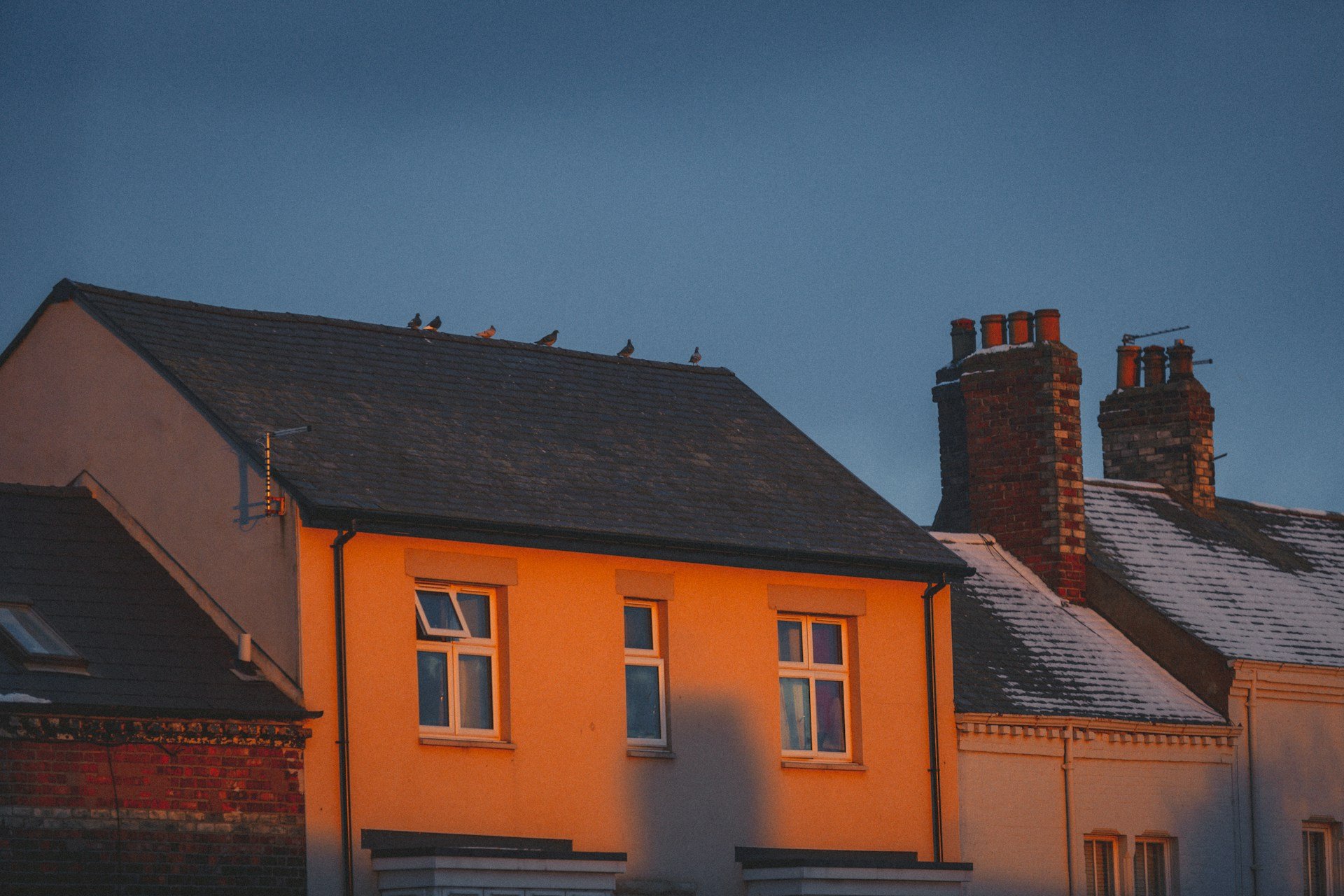Selecting the right roof for your home goes beyond aesthetics; the choice you make can significantly impact the overall performance, maintenance, energy efficiency, and lifespan of your roofing system. Two popular options for homeowners are flat roofs and sloped roofs, each with its unique set of advantages and drawbacks.
Flat roofs offer a modern, minimalist aesthetic and functional advantages such as additional living space and easy access for maintenance. Sloped roofs, on the other hand, are a classic choice with efficient water and snow runoff capabilities, diverse design options, and compatibility with a variety of roofing materials. Factors such as climate, architectural style, budget, and personal preferences play significant roles when deciding between a flat or sloped roof for your home.
In this comprehensive comparison, we will delve into the key differences between flat roofs and sloped roofs, discuss their pros and cons, and provide valuable insights to help you make an informed decision that best suits your specific needs and preferences.
An Overview of Flat Roofs: Materials, Advantages, and Drawbacks
Flat roofs feature a minimal slope, typically ranging from 1/4 to 1/2 inch per foot, allowing for effective drainage without compromising style. Common materials for flat roofs include:
1. Built-up Roofing (BUR): Comprising multiple layers of asphalt and fabric, topped with gravel or other surfacing materials.
2. Modified Bitumen: Flexible, single-ply asphalt sheets, often featuring self-adhesive backing for easy installation.
3. Thermoset (EPDM) Membrane: Rubber-based materials known for their durability and resistance to UV rays.
4. Thermoplastic Membranes (TPO or PVC): Heat-welded, reflective materials that resist UV rays and offer energy efficiency.
Advantages of flat roofs:
1. Facilitates additional living spaces, such as rooftop gardens, patios, or solar panels.
2. Provides a modern, contemporary aesthetic.
3. Requires fewer materials due to a smaller surface area, resulting in lower installation costs.
4. Allows for easy access and maintenance.
Drawbacks of flat roofs:
1. Less efficient at draining water or shedding snow, potentially leading to leaks or other issues.
2. Shorter lifespan compared to sloped roofs due to the materials and increased exposure to UV rays.
3. Limited selection of roofing materials.
An Overview of Sloped Roofs: Materials, Advantages, and Drawbacks
Sloped roofs possess a noticeable pitch, effectively diverting water and snow. Common materials for sloped roofs include:
1. Asphalt Shingles: Widely popular due to their affordability, ease of installation, and diverse design options.
2. Metal Roofing: Lightweight, durable, and energy-efficient materials such as aluminum, steel, or copper.
3. Wood Shingles or Shakes: Classic, eco-friendly materials loved for their natural appearance.
4. Slate or Composite Tiles: Long-lasting roofing options known for their durability, resistance to weather, and unique aesthetics.
Advantages of sloped roofs:
1. Effective water and snow runoff, reducing the likelihood of leaks and moisture build-up.
2. Compatible with a broader range of roofing materials.
3. Aesthetically versatile, suiting various architectural styles.
4. Often possess longer lifespans due to their materials and design.
Drawbacks of sloped roofs:
1. Higher installation costs due to more extensive surface area and additional structural requirements.
2. Limited space for utilities or amenities such as solar panels or rooftop decks.
3. More challenging to access and maintain.
Comparing Flat Roofs and Sloped Roofs: Cost, Installation, and Maintenance
When making a choice between flat and sloped roofs, homeowners must consider the costs, installation process, and maintenance requirements of each option:
1. Cost: Flat roofs typically require fewer materials and labor, making them more cost-effective initially. However, shorter lifespans and potential water drainage issues may result in increased maintenance costs over time. Sloped roofs, while more expensive to install, can offer long-term cost savings due to longer lifespans and fewer maintenance concerns.
2. Installation: Flat roof installations are often quicker and more straightforward, requiring minimal structural adjustments. Sloped roofs often necessitate additional structural support and roofing materials, resulting in a more complex installation process.
3. Maintenance: Flat roofs demand more frequent inspections to mitigate potential water or debris build-up and ensure optimal performance. Sloped roofs typically require less maintenance due to their efficient drainage, but accessing and inspecting the roof might be more challenging.
Factors to Consider When Choosing Between a Flat or Sloped Roof
To determine the best roof type for your home, consider the following factors:
1. Architectural Style: Be sure your choice aligns with your home’s design and complements your neighborhood’s aesthetic. While flat roofs suit modern, minimalist designs, sloped roofs often align better with traditional or classic architectural styles.
2. Climate: Homes in regions prone to significant rainfall or snowfall may benefit more from a sloped roof, which offers superior drainage and protection against leaks.
3. Usage and Functionality: If you plan to use your roof for additional living space, solar panels, or other features, a flat roof offers easier access and increased functionality.
4. Budget: Assess your budget and long-term cost expectations when comparing the initial installation and maintenance costs for each roof type.
Final Thoughts
The choice between a flat and sloped roof ultimately depends on your specific needs, preferences, and the unique characteristics of your home. By understanding the differences, advantages, and drawbacks of each type, you can make an informed decision that not only enhances your home’s aesthetic appeal but also ensures the long-term efficiency and performance of your roofing system.
For expert guidance, support, and superior installation of your flat or sloped roof, trust the Roofing Company of Choice in Rapid City. Schedule your free, no-obligation consultation with our knowledgeable residential roofing contractors, and let us help you make the best choice for your home’s roofing needs!

